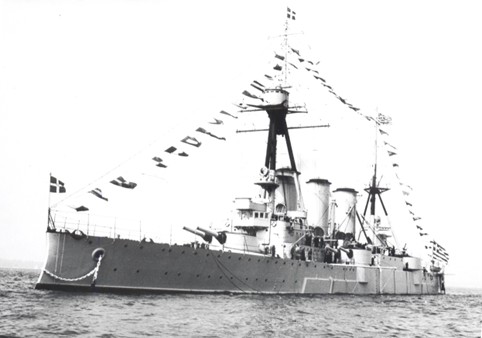
A silence that addressed the world.
On 16 May 1937, at approximately 14:30, as the battleship G. Averof lay among the great fleets assembled at Spithead for the Coronation of King George VI, her flag was lowered to half-mast. Moments earlier, a young stoker — sailor D. Gaggou — had passed away. He had served quietly, far from home, in the heat of the boiler room, and his final watch had ended.
The sea on that day sparkled with ceremony. Fleets of destroyers stretched out to the horizon, flags of every nation flew high in the wind, salutes thundered across the water. But within the Averof, where boiler rooms seethed with heat, a young stoker — sailor D. Gaggou — was slipping quietly away. Away from home, he died as thousands die: quietly, conscientiously, out of sight.
When his crew assembled to honor him, the Greek flag was lowered to half-mast.
And something miraculous happened. Unordered, unsignaled, the foreign vessels lagged behind: British, French, Italian, Russian, Japanese, American. One by one, down came the flags of the world’s fleets, throughout the anchorage. The wind grew still. The sea, minutes before a blur of sound and color, remained spotless and silent.
It was not a ritual act, but an act of instinct — the common sense of all who sail the seas. In a moment of fleeting time, the world’s fleets converged not in power, but in human dignity. They rendered their tribute not to a king or commander, but to a sailor — a man whose labor had been his sole glory.
There never has been anything like it in naval history since. No other day when every flag on the horizon lowered not to assert, but to sympathize. And the Averof, the lone ship of the Eastern Mediterranean, returned with something greater than glory — the proof that humanity and honor are the highest forms of power.
This day at Spithead is singular in world naval history: a fleeting moment of humanity, when the world’s navies lowered their flags not to a monarch, but to a Greek sailor— a message that real strength says little, and real honor human.
Historical reference to the event can be found in Nikos Stathakis’ book “Battleship G. Averof” which provided valuable context for this article.
Text by Capt. Panagiotis Tripontikas, Hellenic Navy – Director of the Floating Naval Museum Battleship “G. Averof”.


